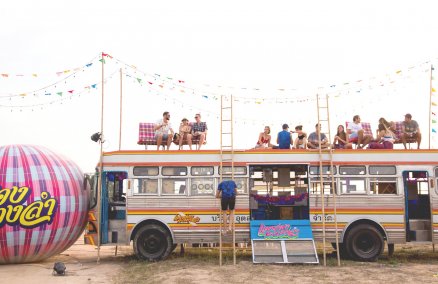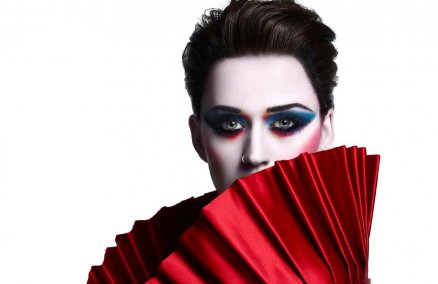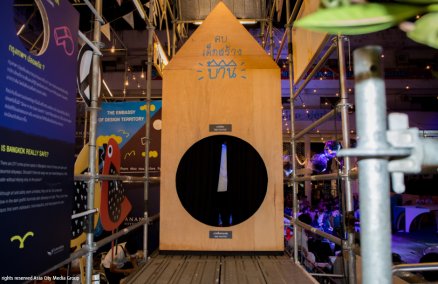What led you to installation art?
My mother used to work at Dusit Thani hotel, back when it was the tallest hotel in Bangkok. She told me that, after my dad passed away, she would go up to what was then the highest restaurant in Bangkok to grieve while watching the city below. She found meaning and formed an attachment to that space. Since then, I have been drawn towards using space in my artwork. I want the audience to not just stand and watch my work from afar, but to get into that space, engage and interact with it.
A lot of people find installation art beyond understanding. What would you say to them?
My work is not meant to please a specific audience, and it’s not meant to have a universal meaning. It’s about how the audience chooses to engage and interpret the artwork in question. Each person will find a different way to relate to my work, which cuts across cultural boundaries. I’m human too, so it shouldn’t be impossible to relate.
What can we expect at Art Talk #3: Aesthetics Makes Sense (Nov 1)?
This is a joint discussion with curator Worathep Akkabootara. I’ll be talking about senses, aesthetics, my use of grand narratives and historicization through my previous contemporary artworks such as Red and Blue Floor (1998), Art as Space for Politics without Space (2010), the Singapore Biennale piece Unequal Exchange/No Exchange can be Unequal (2011) and the Golden Teardrop (2013).
There is a historical side to a lot of your work. Where do you find inspiration?
I sometimes start with things from my memory—it’s just like writing a diary—but I turn it into a visual representation, linking an individual narrative to a historical aspect. This requires research into the history of whatever idea I am working on, be it the history of thongyord and the use of egg yolks in Thai desserts, or the relationship between King Rama IV and Napoleon Bonaparte. I would take an object and illustrate its transformation as it becomes meaningful through time. It’s the things that I see and interact with in my daily life that I’m interested in working with. Sometimes it’s just a continuation of my previous work.















